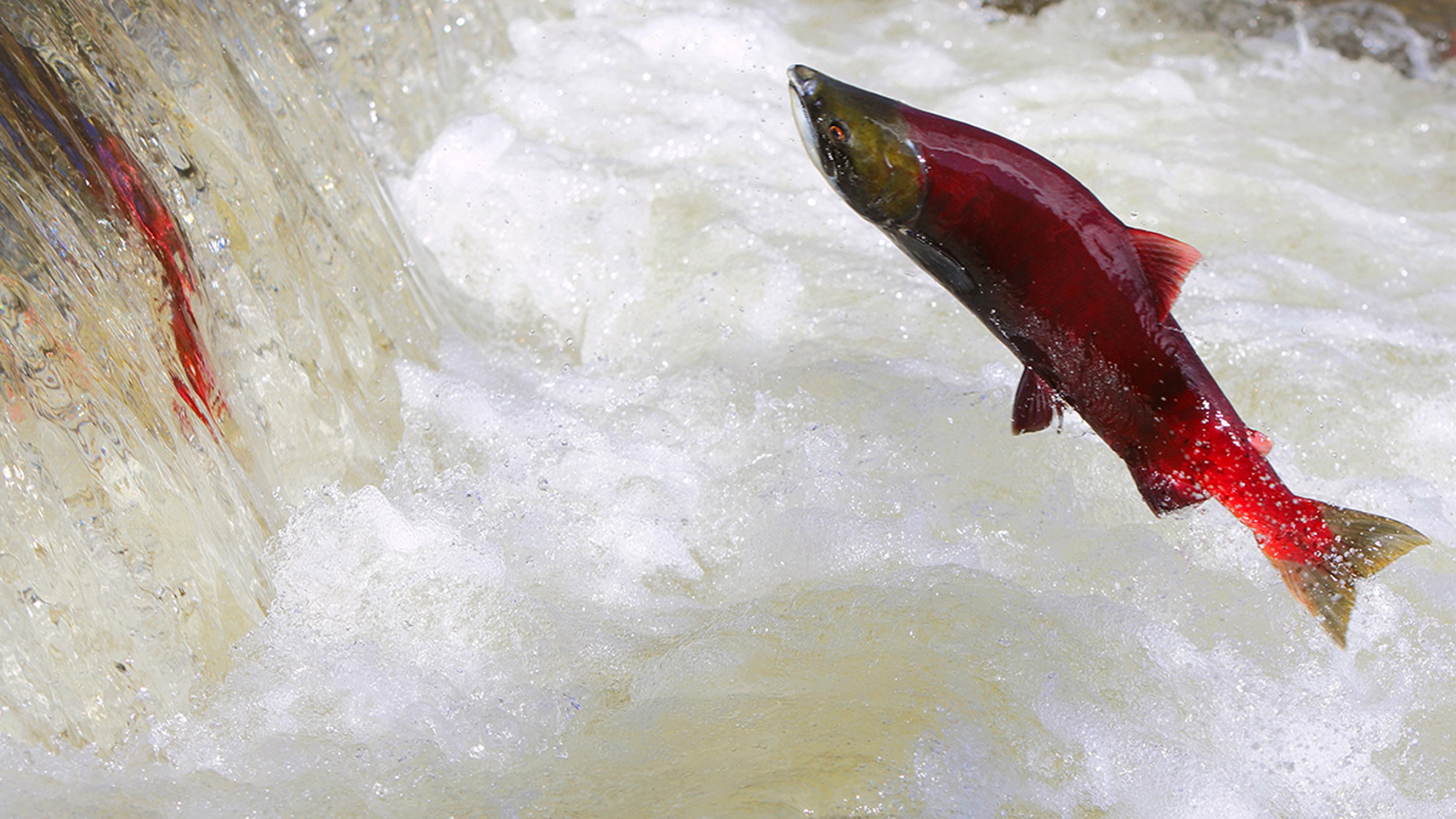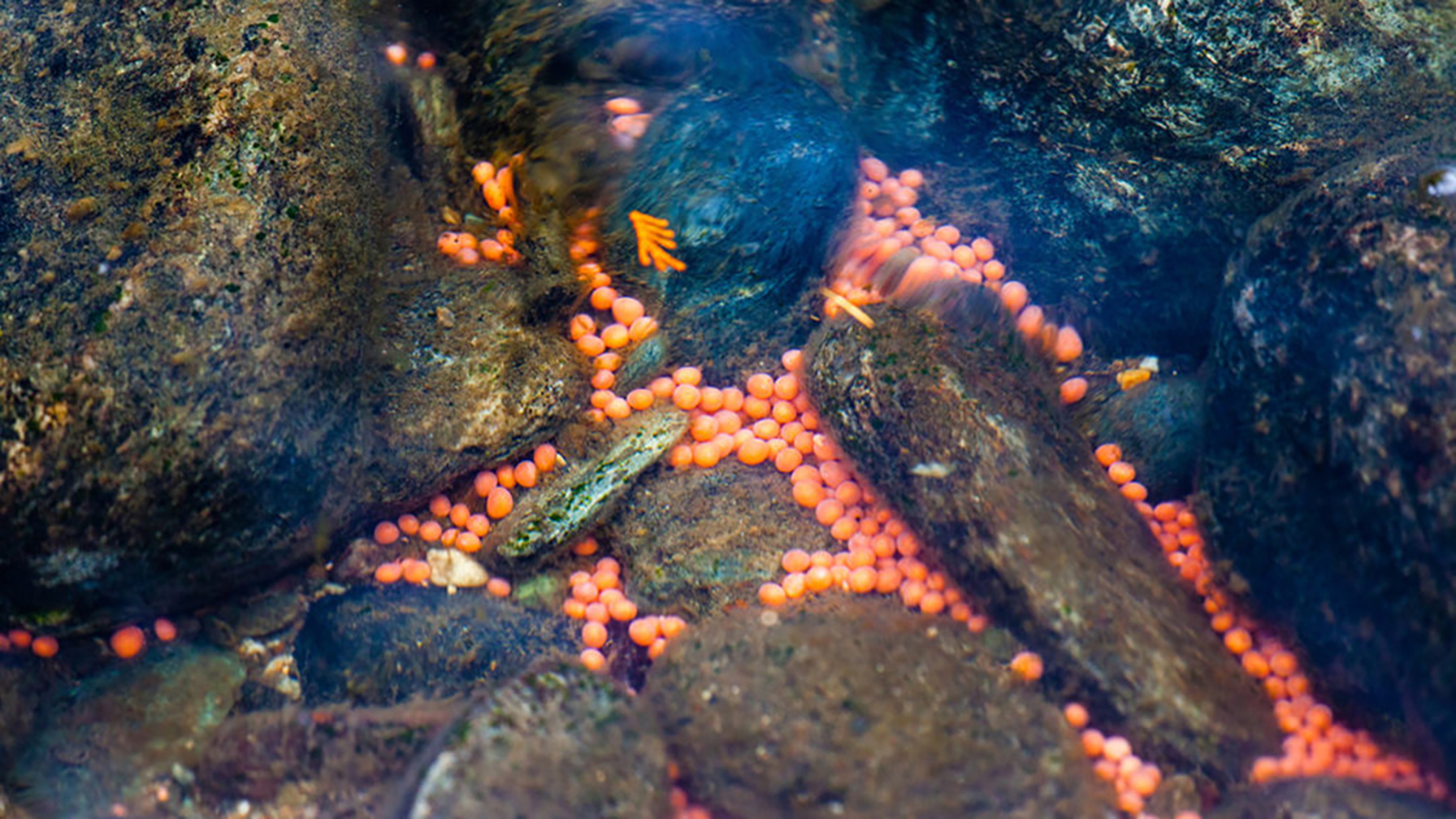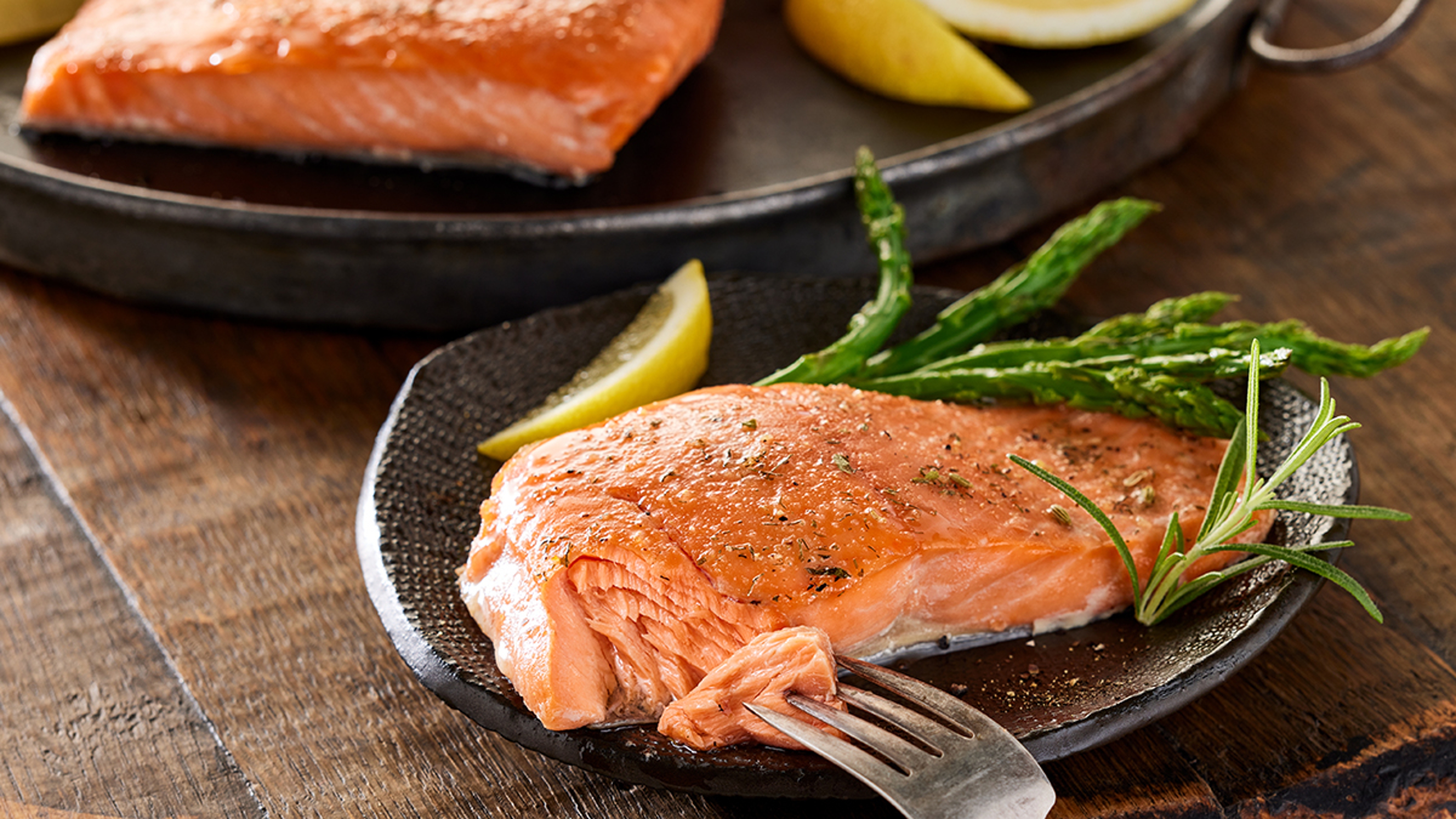Why Do Salmon Swim Upstream?
By swimming between freshwater streams and the salty ocean, salmon have found the best of both worlds.
Mar 17, 2022
If you've ever been on a canoe trip that required even a little upstream paddling, you know how much work it is to fight the current. But wild salmon do just that, struggling upstream every year, sometimes for hundreds of miles, navigating roaring rapids and vicious currents (not to mention hungry bears and, more recently, anglers) to return to the place they were born.
The annual salmon migration might be better termed the salmon homecoming. Adult salmon, who have spent much of their lives in the open ocean, dive back into freshwater rivers, moving unerringly inland to find the peaceful streams and shallow gravel beds where their lives began.
Why?
As it turns out, by moving back and forth between freshwater streams and the salty ocean, salmon have found a way to attain that most elusive of goals: the best of both worlds.
Young salmon, known as alevins after they hatch and fry as they begin to grow bigger, benefit from the safety and tranquility of freshwater streams, where food is easy to find and predators are few. And adult salmon, grown big enough to be formidable predators themselves, find plentiful food in the oceans, where sea life abounds.

To complete the cycle, and ensure the next generation of salmon can grow and mature safe from harm, adult salmon move from their oceanic hunting grounds back to the tributaries and streams that nurtured them as young fry. They swim ceaselessly against the current, pulled by powerful biological forces that lead them home. There, salmon lay and fertilize eggs, which sit for months, waiting for spring and the beginning of the next generation.
The salmon spawning cycle
Fish like salmon that move from saltwater to freshwater to spawn are known as anadromous. Other kinds of fish, including some species of sturgeon, herring, and smelt are also anadromous. But few undertake the epic migrations that some salmon do.
In the U.S., some salmon populations swim hundreds of miles inland to find their spawning grounds. At the upper end of this spectrum are Idaho chinook and sockeye salmon, which ultimately travel some 900 miles, and gain 7,000 feet in elevation, during their return journeys.
But before they begin their return, these salmon spend anywhere from one to five or more years in the ocean, where they feast on krill, shellfish and even other fish. This varied diet gives them a bounty of nutrients, including omega-3 fatty acids. Those fats act as a kind of anti-freeze in frigid waters (you'll find fish oil capsules in your freezer never become solid) and provide “fuel" for their arduous trip home.
After feeding in the ocean, adult salmon have built up stores of lean muscle and fat, necessary supplies for their long journey upstream. How do they find their way? Scientists think that salmon imprint upon the chemical signatures of their home streams at birth, and they follow these signals back upstream. They also estimate around 90 percent of salmon, on average, return to their home streams to mate. By “smelling" the unique molecular signature of their birthplace, salmon are often able to return exactly to where they were born. Other faculties may help guide them as well, including an ability to sense the Earth's magnetic field.
As they begin to move upstream, salmon undergo striking physical changes. In the ocean, the fish are silvery, with smooth, streamlined bodies. But returning salmon grow darker, sporting green and red colorations, and their jaws grow long and hooked to help them fight for mates. Some species also change shape, like pink salmon, which are sometimes called “humpies" for the camel-like humps males grow.
The salmon migration's end

After swimming for days or even weeks, salmon arrive at their destinations, which are typically shallow gravel beds in small streams. Each female, who has been carrying thousands of eggs on her journey, uses powerful sweeps of her tail to clear small pits in the gravel, called redds. There, she'll deposit hundreds or thousands of eggs, and wait for a male to fertilize them. Then she'll cover the eggs with gravel and move on to make several more redds in the same way.
Most salmon die after they've spawned. They expend so much energy on their journey upstream that their bodies are nearly depleted by the time they arrive. Making redds and mating represent their final effort, the culmination of an extraordinary journey. But even in death, salmon play a key role in the ecosystem.
Salmon migrations key to healthy ecosystems
By swimming from the sea to streams, salmon bring key nutrients from the ocean far inland. When they die and decompose after mating, those nutrients nourish plants and animals alike. So salmon in a real sense reverse gravity, preventing heavy, complex compounds that are valuable to life such as selenium and iodine from being forever “sunk" and lost in the ocean's depths. Because of this, salmon are considered keystone species, ones upon whom entire ecosystems depend.
As one generation of salmon vanishes, another is waiting to take its place. Months later as spring arrives, alevins will begin emerging from their eggs. They will grow larger, making their way downstream. The young salmon will grow strong in the currents of the ocean, storing energy for their own great migration. It has been this way for millennia. And sustainable fishing practices, like those practiced by the Alaskan fishermen who supply Vital Choice, help maintain the cycle of salmon renewal. As long as we all respect and protect the salmon's ancient journey, they will keep swimming upstream for a long time to come.







